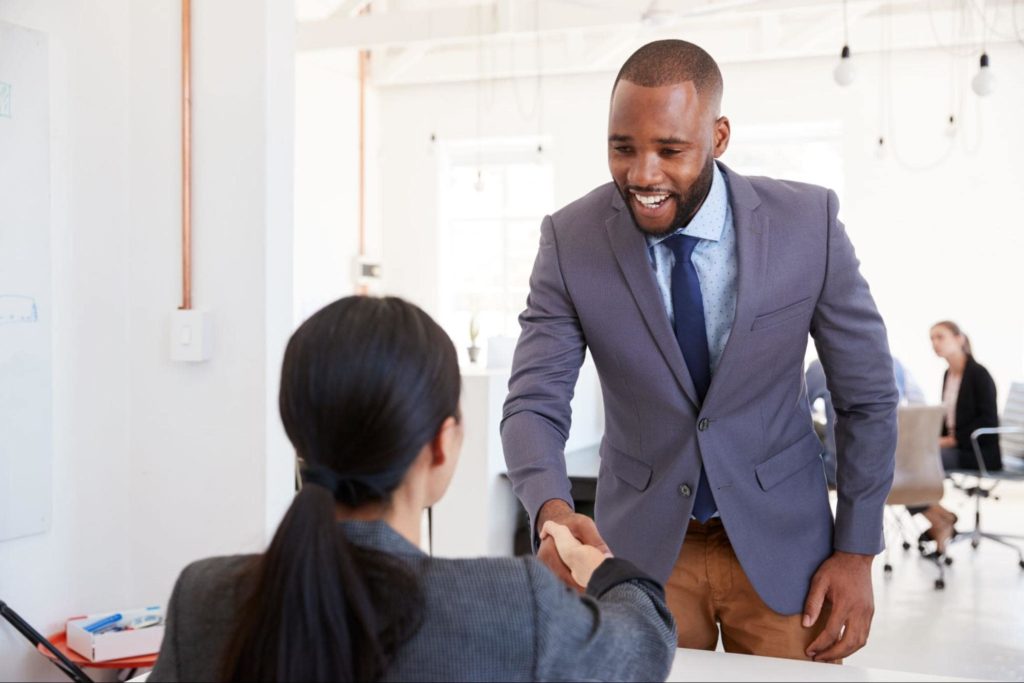Accessibility means more than automatic doors and ramps. Similarly, disabilities are more than the things we can observe physically. In fact, of the 26% of adults in the United States living with disabilities, 21% have disabilities that are not evident to the naked eye.
In this blog, we’ll explore some of the most common social barriers for persons with disabilities, how to create a more accessible and inclusive environment, and briefly explore the difference between physical and social barriers.
Table of Contents
The Difference Between Physical and Social Barriers
Physical barriers are easier to spot than social ones. Usually, structural obstacles in both natural and manmade environments prevent or block mobility. Physical barriers include but are not necessarily limited to:
- The presence of steps and curbs on a sidewalk that prevents a person with limited mobility from going into a building.
- Mammography equipment that requires women with disabilities to stand.
- Weight scales that do not accommodate wheelchairs or people with difficulty stepping up.
These types of barriers present an obstacle for many people living with physical disabilities on a daily basis. But as defined by The World Health Organization (WHO), barriers go beyond physical obstacles. The WHO defines these barriers as:
“Factors in a person’s environment that, through their absence or presence, limit functioning and create disability. These include aspects such as:
- The inaccessibility of a physical environment,
- Inadequacies in assistive technology (assistive, adaptive, and rehabilitative devices),
- Discrimination against people with disabilities,
- People with health conditions are either excluded from or hindered from utilizing services, systems, and policies in all aspects of daily life.”
Social barriers for persons with disabilities are far from uncommon, and they often affect areas of people’s lives that have a drastic impact on their wellbeing and social functioning. We’ll explore some of these common social barriers below, and talk about how to overcome these social disability barriers with helpful coping strategies.

Attitudinal Barriers
Attitudinal barriers for people with disabilities are fundamental and form the basis of other obstacles. For instance, many people are unaware — and therefore, indifferent — of the fact that transportation problems can limit the ability of someone with a disability to participate in everyday life. Attitude barriers can include:
- Stereotyping. People sometimes stereotype those with disabilities, assuming their quality of life is poor or that they are unhealthy because of their impairments.
- Stigma, prejudice, and discrimination. Within society, these attitudes may come from people’s ideas related to disability—People may see disability as a personal tragedy, as something that needs to be cured or prevented, as a punishment for wrongdoing, or as an indication of the lack of ability to behave as expected in society.
Barrier: Stereotyping creates barriers for persons with disabilities, and it’s still a go-to response for many people. While often unintentional, many people fall into the response of pitying persons with disabilities instead of empowering them. At worst, some people may even view persons with disabilities as unable to ever fully participate in society.
Ways to overcome: Society’s understanding of disability is improving as we recognize “disability” as what occurs when a person’s functional needs are not addressed in his or her physical and social environment. Disability isn’t a personal deficit or shortcoming, but instead an opportunity to learn from people with different life experiences and support them to live independent and full lives. As a society, we are and will continue to learn how to help persons with disabilities integrate into society.
At UDS, we’re committed to helping persons with disabilities lead independent and fulfilling lives. One of our goals is to spread awareness of the importance of recognizing the unique strengths and abilities persons with disabilities bring to the table, and how we can help them better integrate into society.
Education Barriers
What are social barriers for students with disabilities? Amongst difficulty learning in a standard classroom or trouble using certain technologies while engaging in remote learning, perhaps the most significant one is the lower graduation rate. The percentage of adults 18 and older with disabilities who have graduated from high school is much lower than that of their peers without disabilities (22.3% versus 10.1%).
Barrier: Due to a lack of accommodations and adequate resources for students with disabilities, the graduate rate is far lower than their peers without disabilities. This has a domino effect, resulting in future employment and income barriers (which we’ll cover below).
Ways to overcome: If possible, be sure to utilize one-on-one support as offered and facilitated by the Local Educational Agency (LEA) in your school district. Every student with a disability who is determined to be eligible under IDEA or qualified under Section 504 of the Rehabilitation Act is entitled to Free Appropriate Public Education (FAPE).
For post-high school plans, which can be daunting, we offer a Transition Curriculum for Students with Disabilities. The UDS Transition School is intended for high school juniors and seniors. Enrollment is free for students who meet scholarship qualifications. A few of the most commonly-available classes include:
- Budgeting for the Future
- Independent Living Skills
- Communication Skills
- Problem Solving
- Workplace Interactions

Employment Barriers
The employment rate for people with disabilities is significantly lower than for those without disabilities. Among individuals (ages 18 to 64) with disabilities, 35.5% were employed, while 76.5% of non-disabled individuals were employed, about double the percentage of adults with disabilities.
Barrier: Due to a lack of education, training, lack of transportation, or accessibility at a job, persons with disabilities often struggle to find employment or complete the necessary tasks at their place of work.
Ways to overcome: At UDS, we offer comprehensive employment services for adults with disabilities. When needed, we help with resume creation, application help, interview preparation job skills, transportation training and information, and more.
Another way to help persons with disabilities overcome employment barriers is to be a voice for them. If you’re a caretaker or someone close to a person with disabilities, vouch for them when needed. If possible, explain to their potential employers that the person in your life is willing and able to complete the job requirements, even if small accessibility accommodations are needed.
Income Barriers
The percentage of individuals with disabilities with income below $15,000 is higher than that of non-disabled individuals (22.3% versus 7.3%). Americans with disabilities and those without disabilities earn significantly different median incomes, according to research from the American Community Survey (Americans with Disabilities Act Participatory Action Research). The median income of people without disabilities was $30,469, compared to $20,250 for individuals with disabilities.
Barrier: People with disabilities are overrepresented among America’s poor and undereducated, despite the Americans with Disabilities Act that ensures equal opportunity in education and employment.
Ways to overcome: Some policymakers are working on passing the Transformation to Competitive Employment Act. This would include a graduated phaseout of subminimum wages by adding financial incentives to assist employers in transitioning to competitive and integrated employment.
At UDS, we can help you find resources for financial assistance, and a host of programs ranging from personal care and independence, enrichment and life skills, and business to business services.
What is Inclusion and How Does it Help Persons with Disabilities Overcome Barriers?
How do you overcome disability barriers? One of the best ways is to focus on normalization and inclusion.
Disability inclusion is about removing unnecessary barriers for persons with disabilities to help them integrate fully into society. It’s about learning from them — the barriers they have overcome and the lessons they have learned — and learning how to help them participate in society more fully and freely.
Integrating persons with disabilities into society requires understanding how they function and how they interact with society, ensuring that everyone has equal access to all aspects of life to the best of their ability.
Whether it’s barriers to social inclusion for persons with an intellectual disability or accessibility issues for persons with a physical disability, inclusion is about helping persons who feel on the outside of society find their place within, both for the benefit of themselves and society at large.